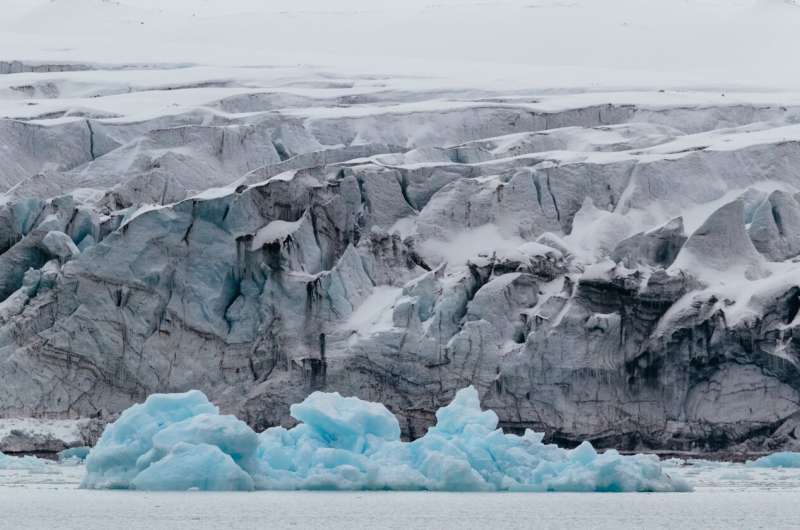This article has been reviewed according to Science X's editorial process and policies. Editors have highlighted the following attributes while ensuring the content's credibility:
fact-checked
trusted source
proofread
The mysterious 'speeding up' glaciers of Svalbard

Spectacular Svalbard sits halfway between mainland Norway and the North Pole and is one of the fastest warming places in the Arctic.
It is also home to glaciers which are, to use the words of Dr. Will Harcourt, a glaciologist from the University of Aberdeen, "speeding up."
Dr. Harcourt and his colleagues spent two weeks on the archipelago in the summer of 2023 studying these unusual glaciers from land, air and sea.
Dr. Harcourt explains, "One of the most significant things that are changing in Svalbard are the glaciers. We want to try to understand how fast they are melting, how fast they're pushing ice into the oceans and by doing so, raising the sea levels. We also want to understand this impact on the environment around them—marine ecosystems, people etc.
"The Borebreen glacier in Svalbard is doing something very interesting—it's surging. Surging glaciers flow relatively slowly for long periods of time and then suddenly, out of nowhere, they speed up and we don't really understand why it's doing it. That was really the core question as to why we were going there—why is it suddenly advancing and speeding up?
"The problem is, we expect this glacier to stop speeding up and slow down again. When that happens, all this ice has been pushed towards the ocean, and because it's below the snow line, it's going to melt again and retreat even further back than it was already. So we think these glaciers are actually going to increase the amount of ice that is lost from the archipelago of Svalbard."
Dr. Harcourt, and his fellow researchers use drones to capture images of the ice that can be converted into 3D interactive models.
"We're really interested to see how the 3D geometry of the glaciers are changing, particularly where the ice falls in—terminates—into the ocean, because that is the place where we get icebergs 'calving' off the end of a glacier and dumping ice into the ocean.
"That is the process that we really want to try and understand to see how that is being impacted by climate change. We also look at past changes by looking at the geomorphology in front of the ice. So this tells us about past ice dynamics and how previous environments impacted ice dynamics."
As well as studying the visible ice forms with drones and laser scanners, Dr. Harcourt also looks at what is beneath the ice.
"We have seismometers that tell us something about activity at the bed that also drive glacier flow. So at this particular glacier that we were looking at, We know that there is meltwater at the bed, so we can use seismometers to tell us how much meltwater there is and how that is driving ice flow at this glacier."
While some aspects of glacier research can be conducted using satellite imagery, on-location field work is critical to understanding the evolving situation in the arctic.
"We may not have glaciers in some locations in the world in 100 years time, so it's really important we understand them now when they're here, how they're changing, and also try to understand if we can mitigate any of the impacts of climate change on these regions."
Provided by University of Aberdeen




















